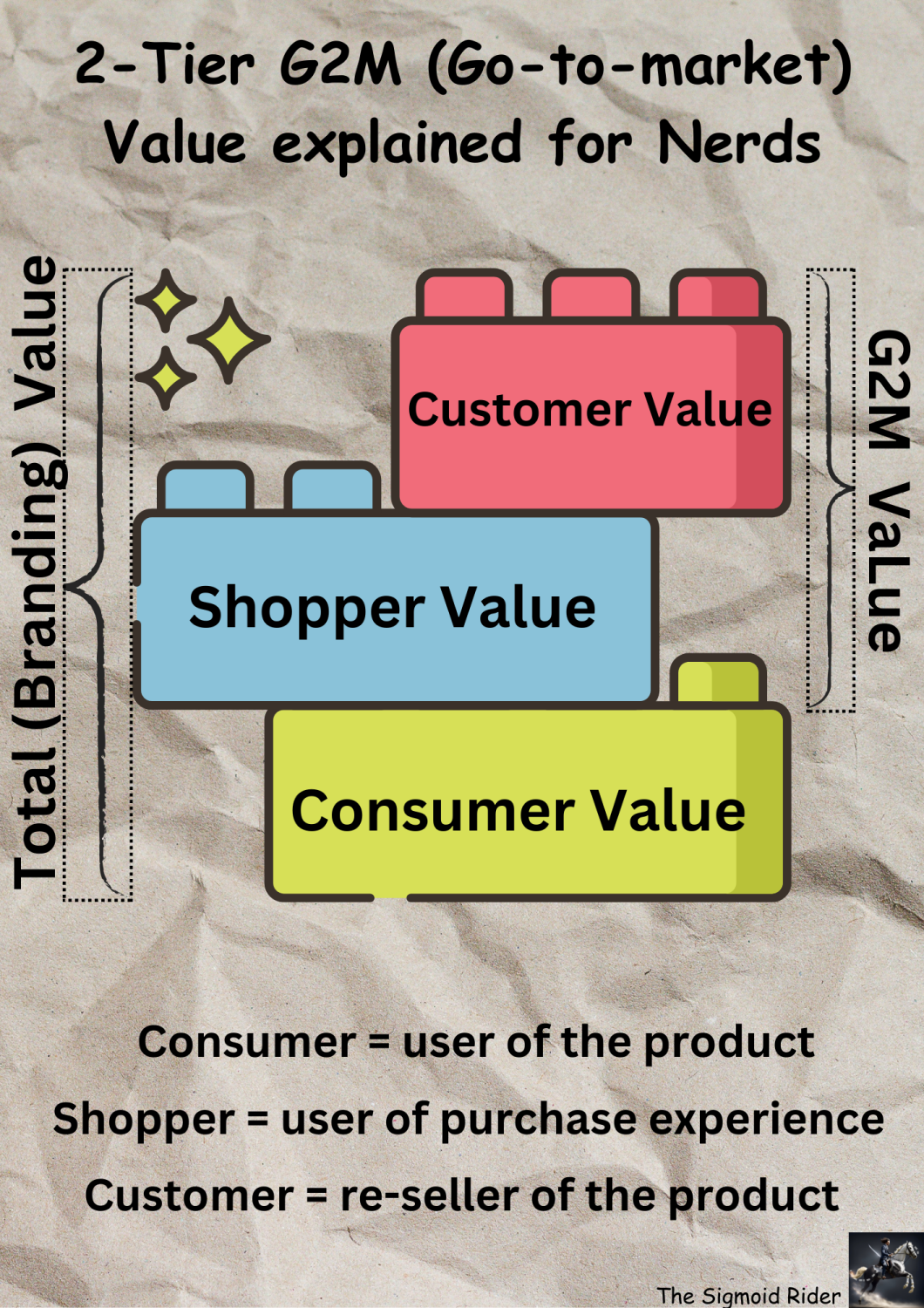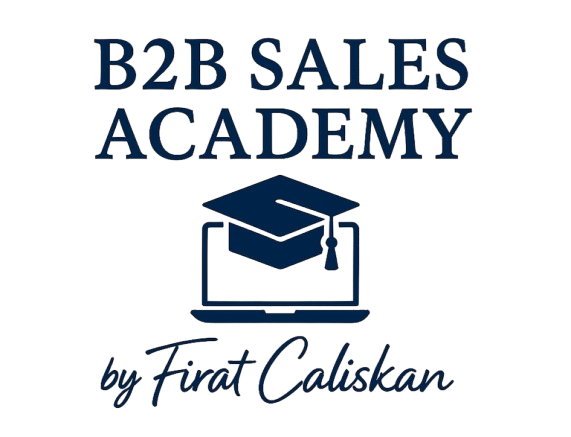
The Trifecta of Adaptive 2-Tier G2M (Omnichannel)
February 3, 2024
Adaptive Go-to-market (G2M) in Repurposed Differentiation Vol.1
Go-to-market (G2M) is where you serve your corporate strategy to your audience through a product or service. It is the delivery of your design efforts. This is where your product meets its prospect/buyer in your marketing funnel (customer journey). This is where the first moment of truth (FMOT) happens, as the former CEO of P&G AG Lafley would put it, where the decision of trial/purchase happens. It is a medium both for communicating the value and for the purchase transaction. It can also be a big part of your maximizing the value effort to have the right for pricing (as The Coca-Cola Company CEO James Quincey would put it) by improving the purchase experience at a personal differentiation level of your prospect. Look at the luxury retail businesses of LVMH, for example.
Like all interconnected strategic elements, you decide your G2M activity based on your aspirations, desired market positioning, your total value creation activity system, your capabilities, and capacity of your sales organization (sometimes also regulations if you are in a regulated industry) and it can (and should) evolve and adapt as the other elements evolve.
The evolution may be in the form of physical expansions (geography or omnichannel) or within the existing channels with higher value creation for all stakeholders through G2M innovations and POS (point of sales) experience. When I say POS experience, I am talking about the whole direct and indirect communication with the prospect in the form of an experience to maximize the perceived value.
You may choose to directly serve your audience (DTC physical or e-commerce) when you want more control of the value equation (benefit/cost) extremes being discounter models and high-end luxury retail or use intermediary re-sellers (retailers, wholesalers, dealers, solution partners etc.) for expanding the reach without increasing the receivables risk as per your strategic aspirations and constraints like the majority of mainstream FMCG and B2B industrials.
Let’s call all re-sellers “customers”, all direct users “consumers”, and the ones who are making the purchase “shoppers” for ease of concept understanding applying for all industries. These may be sometimes the same or different people. But they are always stakeholders to serve. Even when the consumer and the shopper are the same people what they perceive as value may differ as a consumer and a shopper.
As a consumer they would be more interested in the value of the innovation/product solving their need or pain point, as a shopper value would be more in the purchase and after sales experience on top of consumer value of course. And you need to create value for all of the hats if you want to provide a better total value than your competitors. So, with GTM, we move to a new level of value creation. On top of the value created for the consumer, we need to create value for the shopper and the customers as stakeholders if we chose a 2 tier GTM (B2B2C or B2B2B) having customers in between.
For example, in the case of M&Ms of Mars or Oreo of Mondelēz International, the consumer is the kid, the shopper is his/her mom, and the customer is Amazon, Carrefour, or Walmart. These companies can maximize value for their customers from functional levels by helping their financial objectives in terms of category growth and margin toward emotional/personal levels by strategically collaborating to provide a better shopping experience for their joint shoppers through GTM innovation and communication. Poul Weihrauch and Dirk Van de Put know this and make sure it happens.

In the case of Heinz Ketchup of Kraft Heinz or Pepsi of PepsiCo, the consumer is the household or a restaurant, the shopper is the mom of the household, or the restaurant owner and the customer can be Amazon or Walmart of a HORECA wholesaler. They need to understand what value means at each GTM activity at functional and emotional levels for a mom or restaurant owner to cater GTM innovation and communication, addressing these value attributes to elevate the first moment of truth experience to the max. Carlos Abrams-Rivera and Ramon Laguarta know this and make sure it happens.
In the case of Cat Backhoe Loaders of Caterpillar Inc., the consumer would be the loader’s operator, the shopper would be the whole procurement comity (technical department opening the purchase order to purchasing department to facilitate the purchase to financial department making the budget) of the construction company, and the customer would be their dealer in that market. Caterpillar not only needs to make sure its Backhoe loaders is providing the best lifetime value with its performance and durability for the operator but also needs to make sure their value offerings are addressing the needs of the construction company and the dealer in terms of financial terms, convenience of the relationship and personal satisfaction of doing business with. Joe Creed and Denise Johnson know this and make sure this happens day in and day out.
In the case of EcoPlanet cement of Holcim, the consumer would be the owner of the building, the shopper would be the architect or the construction company, and the customer would be the wholesaler or the retailer re-selling the cement. The same applies to Holcim with its stakeholders. The more value created for all stakeholders in this case architects, construction companies, and re-sellers at functional, emotional and personal levels the more sales/trial, loyalty and lifetime value will be created for the company with minimum cost through this loyalty. Miljan Gutovic knows this very well and reveals more plans to cater better to architects’ value attributes.
If GTM is part of the activity system to create the maximum value by differentiation, what do we do to make it happen in a 2-tier G2M?
Differentiation will either result from performing similar activities but better/faster or from performing different activities in the G2M, which we can and choose to do, and our competition either cannot or will not choose to do.
I can think of 2 areas for maximum differentiation thus value creation in a 2-tier G2M:
1) Using data & technology (now GenAI) 2) Relationship management. Better both.
For envisioning purposes, think about a sales team powered by an AI co-pilot (CRM AI App) with real-time access to the company ERP and external data of the customer and their joint shopper. And this co-pilot not only acts as a cockpit to visualize all KPIs for the salesperson but can make predictive analyses based on this data and make recommendations to the salesperson on what to prioritize in daily work or in the next customer meeting to realize company and customer targets by creating more value to their joint shopper improving its overall experience in all touch points of the sales funnel.
Because it is trained with causalities between the shopper data and the company’s shipment and the customer’s sale out results. It is integrated with the promotion planning calendar to make RoI analyses of promotions and recommend best mix of promotions with seasonality and recommend next promo calendar for the best RoI of trade fund spending. Shopper data includes not only purchases of the shopper from this customer and from other customers but also his/her attitude towards the company and the customers from ad-hoc studies and social listening and recommends co-marketing activities to address these emotional value attributes that would work for the brand of the product and brand of the customer. Shopper data also includes the desired funnel and actual funnel AI can recommend where to look and what to correct to minimize the churn.
Data, technology and relationship building can also be utilized in forms of differentiated activities that your competition can or will not do. This can be done either by leveraging your unmatched data power, your proprietary technology, or your unparalleled relationships or by using others’ by making exclusive partnerships having unmatched power in data, technology, or relationships, creating bigger differentiation for both sides. Look at the partnership between Microsoft and OpenAI.
Overall with all these productivity gains your sales team can spare more capacity to engage with the customer and work on the relationship building on a strategic level transcending functional benefit/value attributes toward more personals.
In GTM, brands’ relationships move from persona to persona toward person to person between the selling organization and the customer organization as a natural and essential extension of a holistic branding-driven value creation activity system. Sales people are also marketers who drive this holistic value person to person with customers and even shoppers in a DTC retail model.
What would make the biggest differentiation and value maximization for companies in a 2-tier GTM activity is moving the relationship between the company and the customer from a transactional B2B relationship focusing only on functional benefits around technical features and financials of the deal structures (even these are foundational and a no miss) to a strategic partnership jointly catering their shoppers’ overall experience at emotional and personal levels towards the product and the suppliers of it.
I had written an entire article about how we were doing this via “Scorcarding and Joint Business Planning” using Shopper Data of the retailers having top-to-top meetings in the G2M innovation centers (I was a project manager of one of those in Geneva years ago) of P&G (see here). Back then this was creating our unfair advantage in GTM with modern retailers like Carrefour or Walmart using proprietary data, technology and unmatched relationship building.
But all these can only happen as an evolution along the growth curve of the organization and it is essential to be aware of this and start and manage the change accordingly.
In the next article, we will go into the theory of G2M evolution in the S-Curve Strategy philosophy.
May the force (of G2M Value) be with you.
Please feel free to share your thoughts or ask a question about the article.
If you want to stay informed about new articles in this series and more, subscribe to my Newsletter, “The Sigmoid Rider“
Let’s also connect if you share a passion for Strategy and Leadership for Sustainable Growth.
For more articles, check my LinkedIn profile , Blog posts at www.firatcaliskan.com or Medium.com
Cheers,
C.Firat Caliskan
